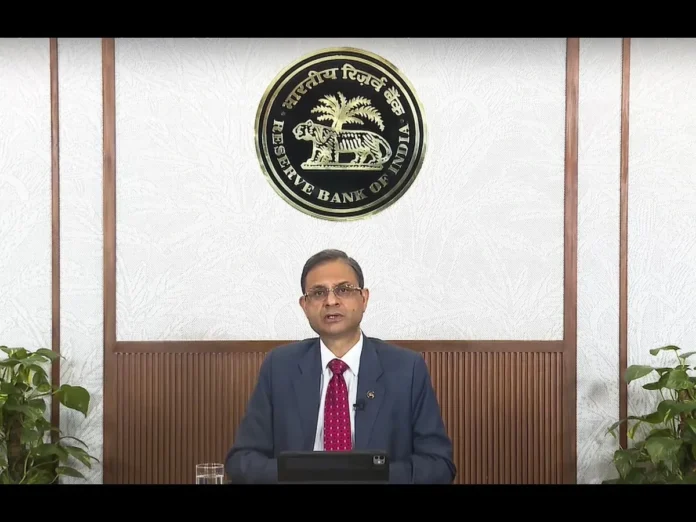Introduction
In a significant development that could reshape the landscape of India’s banking sector, the Reserve Bank of India (RBI) has hinted at allowing foreign banks to own up to a 26% stake in domestic lenders. This strategic shift, if implemented, would mark a notable liberalisation step in India’s financial system, opening up new avenues for foreign capital, improving competition, and potentially strengthening the capital adequacy of Indian banks.
This article explores the implications, potential benefits, challenges, stakeholder reactions, historical context, and the road ahead for this proposed policy shift.
Background: India’s Evolving Banking Ownership Norms
India has traditionally adopted a cautious approach towards foreign ownership in its banking sector. The country’s banking system is dominated by public sector banks (PSBs), private sector banks, cooperative banks, and a handful of foreign banks operating through branch models.
Foreign Direct Investment (FDI) Policy:
Currently, the government allows up to 74% foreign ownership in private sector banks, with 49% under the automatic route and the rest needing government approval. However, ownership limits in public sector banks and restrictions for foreign banks setting up wholly owned subsidiaries have kept foreign stakes limited in practice.
Over the years, India’s central bank has taken calibrated steps to balance the benefits of foreign capital inflow with the need to maintain financial stability, ensure effective regulation, and safeguard domestic interests.
What Did the RBI Governor Say?
In a recent interaction at an industry event, RBI Governor Shaktikanta Das hinted that the central bank is actively reviewing proposals to permit foreign banks to hold up to 26% stake in Indian lenders. While the idea is still in a consultative phase, the statement signals the regulator’s openness to align banking norms with global standards.
According to Governor Das:
“India’s banking sector has matured significantly over the years. We are evaluating whether allowing foreign banks to hold up to 26% in Indian lenders could further strengthen capital buffers, governance standards, and bring in global best practices.”
Why the 26% Threshold?
The 26% shareholding threshold is significant under Indian corporate law, as it provides enough voting rights to influence key decisions while not crossing into a controlling stake territory.
- Minority Protection: A 26% stake can block special resolutions that require a 75% majority, thus giving foreign investors a meaningful say.
- Maintaining Indian Control: The threshold ensures that foreign entities do not gain a controlling interest, maintaining domestic oversight.
Potential Benefits of Allowing 26% Foreign Stake
1. Boosting Capital Adequacy
One of the key challenges for Indian banks, especially PSBs, has been raising sufficient capital to meet Basel III norms and fund growth ambitions. Allowing foreign banks to invest could provide a fresh pool of capital.
2. Improving Governance and Risk Management
Foreign strategic investors often bring robust risk management systems, technology upgrades, and global best practices, potentially strengthening Indian banks’ governance frameworks.
3. Enhancing Competition
A more competitive banking landscape could lead to better products, improved customer service, and lower borrowing costs for consumers.
4. Encouraging Consolidation
Strategic foreign investment could encourage consolidation in India’s fragmented banking sector, especially among small and mid-sized banks struggling with capital and asset quality issues.
5. Global Integration
This move aligns India’s banking policies with other emerging markets that have progressively liberalized their financial sectors, increasing investor confidence and attracting long-term foreign direct investment.
Key Stakeholders and Their Likely Responses
1. Public Sector Banks (PSBs)
PSBs, which hold nearly 60% market share, may benefit from improved access to foreign capital. However, given that the government must hold a minimum 51% stake in PSBs under current laws, any significant foreign holding will require careful structuring.
2. Private Sector Banks
Private banks are expected to welcome the move as it could expand their investor base and valuation multiples. Banks with strong fundamentals may attract reputable foreign institutions looking for strategic footholds.
3. Foreign Banks
Foreign banks operating in India have often sought greater flexibility to grow beyond branch models. A chance to invest strategically in domestic lenders could offer faster expansion, stronger local partnerships, and better market penetration.
4. Regulators
While the RBI has shown openness, regulators will have to ensure that the move does not compromise financial stability. Stringent due diligence, fit-and-proper norms, and robust monitoring will be critical.
5. Bank Employees and Unions
Bank unions may express concerns over potential job security and foreign influence in decision-making. Stakeholder consultations will be essential to address these apprehensions.
Challenges and Risks
Despite its advantages, the proposal is not without risks:
- Regulatory Oversight
Increased foreign ownership could pose challenges in regulatory oversight, especially if the parent foreign bank is headquartered in jurisdictions with less robust regulatory frameworks. - Conflict of Interest
Foreign banks with local operations could face conflicts of interest when they hold significant stakes in competing domestic banks. - Economic Volatility
Sudden capital inflows or outflows by foreign investors may expose banks to vulnerabilities, especially during global financial crises. - National Security Concerns
Financial institutions are critical infrastructure. Any foreign influence over decision-making could raise national security concerns, particularly in times of geopolitical tension.
Historical Context: Liberalization Milestones
India’s journey toward liberalising its financial sector has been gradual but steady:
- 1991 Economic Reforms: Initiated the process of opening up the economy, including the banking sector.
- 1994: Foreign banks allowed to operate through branch presence.
- 2004: RBI introduced guidelines for setting up wholly owned subsidiaries by foreign banks.
- 2013: Liberalisation of FDI norms for private banks to 74% with conditions.
The new proposal to allow foreign banks a direct stake aligns with this progressive trajectory.
Global Comparisons
China: In 2020, China removed ownership caps for foreign banks, allowing 100% ownership under certain conditions.
Singapore: Foreign banks have operated with significant autonomy, attracting global players and enhancing financial depth.
Brazil and Mexico: Both countries allow foreign banks to own substantial stakes in domestic lenders, resulting in diversified ownership structures.
India’s proposed move aims to balance global integration with domestic safeguards.
Potential Impact on the Indian Economy
- Banking Sector Health: Fresh capital infusion could help Indian banks tackle stressed assets, improve capital buffers, and fund credit growth.
- Credit Availability: Easier access to capital can boost credit flows to critical sectors like MSMEs, infrastructure, and green finance.
- Foreign Exchange Reserves: Inflows of stable FDI could strengthen India’s forex reserves, providing a cushion against external shocks.
- Investor Confidence: A transparent and liberalised framework enhances India’s attractiveness as an investment destination.
The Road Ahead: Next Steps
Governor Das’s comments suggest that the proposal is at an early stage. The likely next steps include:
- Stakeholder Consultations: Engaging with banks, industry bodies, unions, and foreign institutions to gather feedback.
- Policy Drafting: RBI may issue a draft discussion paper outlining eligibility, shareholding structure, voting rights, and governance norms.
- Cabinet Approval: Any changes to FDI norms, especially for PSBs, would require government and parliamentary approval.
- Phased Implementation: A phased approach could help monitor the impact, allowing time for the domestic system to adapt.
- Safeguards: Ensuring robust fit-and-proper criteria, ring-fencing sensitive data, and maintaining effective supervision.
Expert Opinions
Industry Analysts:
Most analysts see the move as positive for the long-term health of India’s banking sector, though they caution about implementation challenges.
Credit Rating Agencies:
Rating agencies may view the policy favourably if it strengthens capital adequacy and governance, potentially leading to ratings upgrades.
Economists:
Economists argue that prudent liberalisation can catalyse economic growth, but stress the need for strong regulatory safeguards.
Conclusion
The Reserve Bank of India’s hint at allowing foreign banks to own up to 26% in Indian lenders is a bold signal towards greater liberalisation and integration with global financial markets. The move has the potential to attract long-term capital, strengthen banks’ balance sheets, foster competition, and improve governance standards.
However, successful implementation will require a delicate balance — protecting national interests while promoting financial innovation and global best practices. As India continues to evolve as one of the world’s fastest-growing economies, a resilient and well-capitalised banking system will be vital to sustaining inclusive growth.
Stakeholders will keenly watch how the RBI navigates this path, ensuring that India’s financial stability remains robust while making its banking sector globally competitive.



